Este post também está disponível em:
Português
English
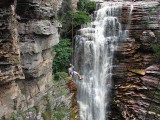
When you think of sun, beach, carnival and Brazilian culture, Bahia is one of the first places in the country to come to mind.
However, the state is also a reference when it comes to extreme sports. Its exotic nature and large number of parks, waterfalls, lakes and mountains have become famous among adventure-seeking tourists.
Due to the rugged terrain and incidence of mountains and caves throughout the state, abseiling is one of the most common practices.
Interacting with the São Francisco River and its canyons, exploring the beauties and camping in Chapada Diamantina and venturing into cascading (an adventure sport that consists of the progressive exploration of a waterfall) through the caves that spread on Bahian soil are just some of the possibilities.
In Costa do Cacau, the hundreds of kilometers of beaches, rivers and waterfalls in preserved areas of the Atlantic Forest favor the practice of cascading, which uses the same techniques as rappelling to descend waterfalls.
Ideal for the more experienced adventurers, the Véu de Noiva Waterfall – suggestively known as Pancadão – has the highest jump in the region, 40 m high.
Access is also not easy: you have to travel an hour by boat and then take a 40-minute trail.
Another waterfall suitable for advanced levels of rappelling is located at Costa do Dendê.
The Pancada Grande waterfall, with its three gigantic stone steps (called Três Pancadas) along 90 m, has already been the stage for the Ecomotion/Pro competition, which brings challenges in nature.
It is necessary to be aware of the strong flow of the Rio das Almas and the stones of the place, which are usually very slippery.
Videos about rappelling in radical places of Bahia
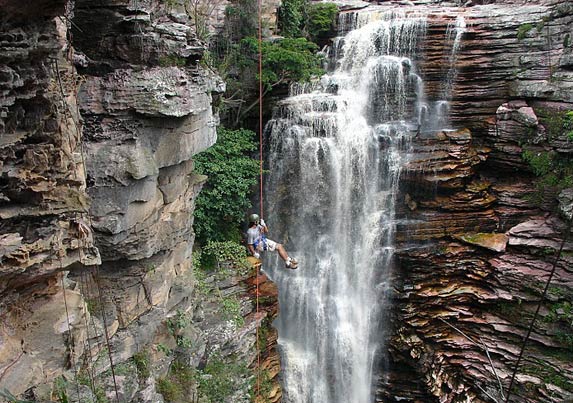
Pratique rapel em lugares radicais da Bahia
Rapel in radical places of Bahia
1. Bungee-Jumping on the Dom Pedro II Bridge in Paulo Afonso
A must-see for nature lovers is the region of Paulo Afonso, where the São Francisco River passes.
Paulo Afonso is a city in the far north of Bahia, located in the northeastern semi-arid region.
Just the opportunity to get to know it would be enough to attract tourists, but, in addition, there is the canyon that borders it and that favors the practice of an amazing rappel.
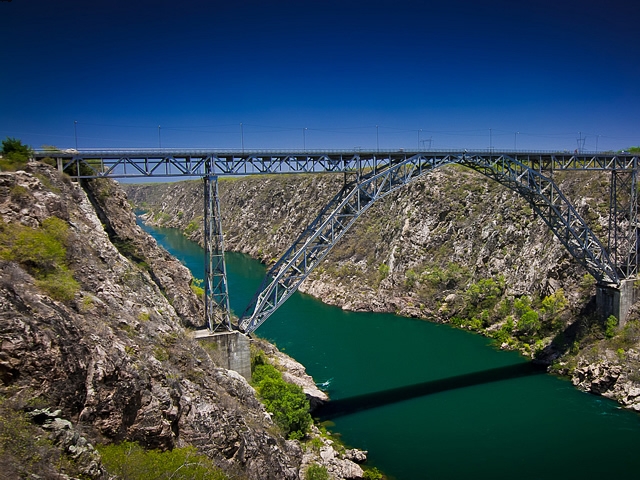
On the Dom Pedro II Bridge in Paulo Afonso, the metallic bridge, built in 1958 by Juscelino Kubitscheck to connect Alagoas and Bahia, it is possible to appreciate the beautiful landscape during the 84 m descent.
Bungee-jumping is also very common. If when you get there you feel some familiarity with the scenery, don’t be surprised: the bridge is often the setting for rappelling and bungee-jumping in sports programs.
2. Caving in the caves of São Desidério
São Desidério is a Brazilian municipality in the state of Bahia and is located about 900 kilometers from the capital Salvador.
If the intention is to also practice caving, the most sought after destination is the West of Bahia, whose rocky complex forms a large complex of caves.
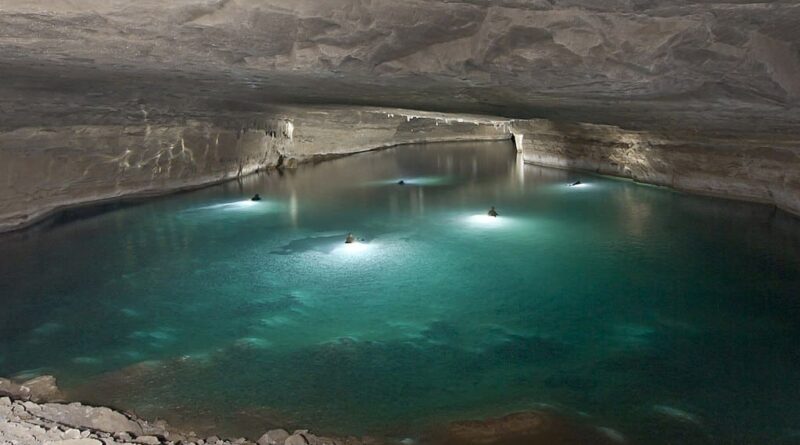
In the most harassed caves, Buraco do Inferno and Sumidouro, the obstacles are considered difficult.
In the Gruta do Catão, which can be reached by following a trail of about 100 m with steep and rocky terrain and dense vegetation, caving requires effort, but it is worth it due to its unique beauty.
The sport of caving is an activity from the perspective of leisure, carried out in a cave environment.
From there, you can access the Blue Lagoon, one of the region’s postcards. Nearby there is also an archaeological site and a lake with a kind of quicksand.
3. Rappelling in the High Adventures of Chapada Diamantina
Chapada Diamantina is an abseiling paradise. With its hills, caves and waterfalls, the region is known for its natural beauty. Be sure to pass by Morro do Pai Inácio, the postcard of Chapada.
You may not have the courage to venture into a rappel through the place, but do not be inhibited – the height of 150 m makes many give up even before the climb. If you’re just starting out, Poço do Diabo (Devil’s Well), with a height of 22 m and a lake at the end, is ideal.
It is in the Chapada Diamantina that is also the largest waterfall in Brazil, the Fumaça – which is also one of the highest in the world, with 420 m.
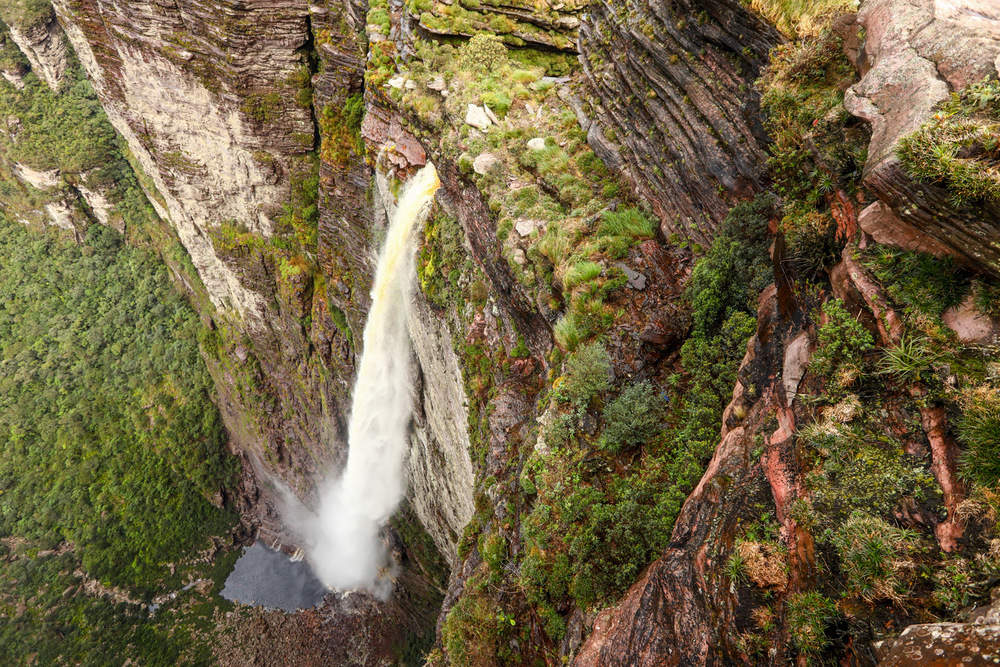
Naturally, cascading at the site is also the riskiest. However, even for those who do not have much experience, it is worth traveling the 48 km trail (in four days and three nights) to reach the fall. The itinerary includes a zip line crossing, as well as caving and cascading in the waterfalls and caves along the way.
Cave rappelling can also be done at Gruta do Lapão Velho, in the region of Santa Luzia. There are two entrances separated by 500 m of steep descent. Inside the cave, there are crossings of chasms and submerged galleries.
Climbing to the top of ‘Apaga Vela’, you reach the main hall. In total, the complex has about 20 caves.
4. Urban Rappelling in Salvador
But every abseiling enthusiast knows that, although desirable, the natural environment is not an essential prerequisite for the sport. Where there is rough terrain and great heights to be traversed, it will always be a good option.
That’s why in Salvador, with its geological depressions that gave rise to walls, bridges and viaducts, it’s not uncommon to see abseilers descending towers here and there.
The main points of the city for the practice are the building of the Hotel Vitória Marina, towers of TV Itapoã and the Bahia Convention Center and the Elevador Lacerda, one of the best known tourist spots in the city. At 72 m high, it provides a spectacular view of the Bay of All Saints.
Bahia.ws is the largest tourism and travel guide for Bahia and Salvador.
Practice rappelling, bungee-jumping and caving in extreme places of Bahia



















